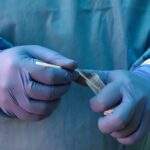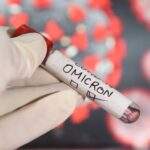PCR test works by amplifying a specific target sequence of DNA or RNA in a sample. It involves several cycles of heating and cooling to facilitate DNA replication.
VCare follows these steps for PCR test:
1. Sample collection: A swab or other specimen collection method is used to obtain a sample, typically from the nasal cavity or throat in the case of COVID-19 testing.
2. Nucleic acid extraction: The genetic material (DNA or RNA) is extracted from the sample. This step separates the target genetic material from other components present in the sample.
3. PCR setup: The extracted genetic material is mixed with specific primers (short DNA sequences) that are complementary to the target sequence. These primers define the region of DNA or RNA that will be amplified.
4. PCR amplification: The PCR machine heats the mixture, causing the DNA strands to separate (denaturation). The temperature is then lowered to allow the primers to bind to their complementary sequences in the DNA (annealing). Finally, the temperature is raised again, and a special enzyme called DNA polymerase synthesizes new DNA strands using the primers as a starting point (extension). These three steps are repeated in multiple cycles to amplify the target DNA or RNA exponentially.
5. Detection: The amplified DNA or RNA can be detected using various methods, such as fluorescent dyes, molecular probes, or gel electrophoresis.
COVID-19 Test near Brunswick, Dayton, New Jersey Book an Appointment / Call (888) 460 1151 / Walk-Ins also available


